Repurposed
Synopsis: Think laterally, use your imagination, hoard stuff … there’s lots you can repurpose to make both your beekeeping and bank balance better. And it’s something to fill the months until the season starts.
Introduction
The big equipment suppliers – Thorne’s, Abelo, Dadant etc. – are very happy to sell you everything you need for your beekeeping … and a whole lot of stuff you probably don’t. A ‘hard sell’ approach to marketing isn’t needed, they simply provide an enticing catalogue or website and rely upon the long, cold, dark, wet and windy winter to do the rest.
It’s disturbingly effective … I’ve got the receipts.
An enthusiastic beginner might need a second mortgage after a trip to Rand or a winter afternoon in front of the fire browsing the catalogue.
Beekeeping is not an inexpensive pastime {{1}} when starting from scratch. Hives, beesuits, bees, smokers, hive tools, multi-purpose eke/clearer/insulated crownboards {{2}} and other essentials leave little change from a substantial chunk of moolah.
Of course, with certain exceptions, buying shiny new kit makes things easy. Equipment is compatible, it’s been tested, built to a high standard and ‘just works’. It’s one less thing to worry about when starting out, and – midseason – it provides a quick fix to rectify an urgent problem.
However … as well as sometimes being painfully expensive {{3}}, it turns out that the suppliers don’t sell everything you need. With a little effort, some opportunism, a sprinkling of imagination and those long winters you can rectify this and save money.
Today I’m going to discuss repurposing things you beg, borrow or steal find (or perhaps buy cheaply) to enhance, or even improve, your beekeeping.
And your bank balance.
Repurposing
I admit it’s a bit of a contrived post title. Think of it as using everyday or otherwise items for a purpose different from their usual application. It’s a catch all term and there’s no way this post can do anything more than provide examples to whet your appetite.
Think about your beekeeping and the problems you encounter.
Think laterally; what could be improved?
Keep your eyes open and don’t necessarily expect a solution overnight … the storage boxes I discuss below took more than 11 years to find (though I wasn’t looking too hard). I’ve only seen a couple of really good galvanised wheelbarrow ‘frames’ in a decade but had previously bought one to build Buster the hivebarrow, however they do turn up periodically.
Hoard stuff you find that might be useful. It costs little more than space {{4}} but might save you a fortune when you finally think of an application for it.
Insulation
I’m a big fan of top insulation. All my hives, whatever the season, have a block of insulation directly over the crownboard. In the summer this prevents overheating as the sun beats down on the metal (or, more often, black Correx) roof. In the winter it prevents valuable warmth generated by the cluster from escaping, so reducing the consumption of stores.
Even the poly Abelo hives I use have an additional block of insulation over the crownboard. The more the merrier.
Of choice I prefer the Kingspan- or Celotex-type foil-sheathed expanded foam insulation that is used during house construction, usually lining the walls or incorporated into the floor. You can buy this stuff from DIY stores (usually quarter sheets) or trade outlets (in, slightly more economical, 2.4 x 1.2 metre sheets), but it’s not cheap.
Dumpster diving
Or you can go ‘dumpster diving’ and source it yourself from nearly any building site or house renovation.
Take a jar of honey, check the skip, ask nicely and make the trade.
Don’t worry if the insulation is tatty or wet. It dries out and gaffer tape will hide all sorts of blemishes.
Use a handsaw to cut it into 46 cm squares {{5}}, or perhaps fractionally smaller so it doesn’t get jammed in the roof. I usually cut 45 cm squares for my National hives. The saw generates lots of foam ‘sawdust’ but it’s better than using a breadknife which flexes too much in thicker sheets.
Seal the edges with overlapping strips of gaffer tape, waterproof if you use very shallow roofs. Seal any major dings in the surface with more gaffer tape – don’t leave the foam exposed as the bees will chew it.
These aren’t just useful to keep the warmth in the hive … I’m currently using them to retain the heat in my heather honey supers that are stacked on my warming cabinet before extraction.
This type of insulating foam ‘carves’ easily. You can make similar sort of insulation for nucs, even recessing the edge to that the roof fits neatly. Just make sure you protect the cut foam edges as they are friable and easily damaged.
And, before you ask, 25 mm is useful, 50 mm is better and thicker still is perfectly acceptable, particularly if you use deep roofs. The blocks above are 70 mm thick.
Wood
And, while you’re perusing the skip, have a look for any reasonably long and straight pieces of wood. You might find all sorts of offcuts that you can convert into hive stands and other things.
If the wood has sat out in the rain for weeks then chastise yourself for not looking earlier … it might well warp as it dries, but it may still be useful.
If shed or garage foundations have been poured there’s almost always some cement-stained 4×2’s or 3×2’s chucked aside. I’ve had both built recently and the wooden formwork was simply discarded afterwards.
With a bit of a scrub and scrape, and a couple of coats of fence preservative, some of these were converted into the transverse wooden supports on my {{6}} ‘ultimate hive stand‘
Speaking of which … it’s arguable (as they’re not cheap if bought new) but the legs of that hive stand are also repurposed. They are adjustable scaffold jacks. Mine were bought new, but I’ve seen quite a few being sold off on Gumtree {{7}} for a fiver each.
It’s worth remembering that the bees don’t have any opinions about hive stands or your woodworking skills. It doesn’t matter how tatty they look, as long as they are stable and secure all will be well.
Travel safely
Unless you practice some sort of migratory beekeeping you probably rarely move hives. A lovely wooden-framed travel screen is a ‘thing of beauty and a joy for ever 20 minutes’ {{8}}, and costs £21 a pop. You might use it once per season and it’ll then languish in a spider-infested corner of the shed until you can’t find it the following year.
Instead, buy a couple of square metres of fibreglass insect screen. It’s bee-proof, rip-proof, tear-proof, ‘cheap as chips’ and usually available in white, black or grey. I’ve bought all three colours at one time or another, using the colours to differentiate between travel screens for nucs or hives.
Cut it oversized. On a poly nuc you can simply pin it in place, taking care to overlap the corners to prevent escapees.
On a full hive, with 15,000 more bees, I take a little more care. I’ve found the easiest way to hold the mesh down securely is with an eke, strapped tightly down. What’s more, on arrival at the distant apiary, you can leave everything in place, add the roof and leave them to settle down.
It’s worth noting that this insect mesh is the same {{9}} as Thorne’s propolis screen but is ~1/6th the cost per unit area (3 m2 of insect mesh costs about £8, whereas the ‘propolis screen’ costs £4.60). It’s not as good as a cheese draining/ripening mat for propolis collection, but that costs a lot more.
If the weather is cool you might not need a travel screen to move your hives, but if you do this mesh takes up no space and costs very little.
Travel blocks
While we’re on the subject of travel I’ve found that the closed cell foam (often used to pack computers or printers) is very useful to stop frames jiggling around on pothole-strewn roads.
If you ever find this sort of foam, snap it up PDQ. You can cut it to size with a breadknife and bore large holes through it with a hole saw.
It’s great because it is quite firm, but does have a little bit of ‘give’, quickly returning to shape after compression. I’ve found all sorts of uses for it; in addition to packing frames together I’ve used it for entrance blocks when moving hives and most of the inside of my queen cell incubator is built from it.
The Nicot cages are pushed into the holes and are held securely.
Crownboards and things
A large IKEA ‘RIBBA‘ framed picture fell of the wall last month {{10}}.
The frame was made from some sort of foil-wrapped pulped and reconstituted ‘wood’ with zero structural strength – disappointing – but the ‘glass’ was a sheet of thin polycarbonate. These frames used to have glass ‘glass’, but they switched to flexible 2 mm (?) polycarbonate several years ago.
This stuff makes excellent crownboards for nucs. In fact, many commercial nucs are provided with crownboards made from the same stuff {{11}}.
I managed to get 4 crownboards for Paynes nucs from a single 60 x 90 sheet {{12}}. The easiest way to cut it is using a Stanley knife and a metal straightedge. Don’t attempt to cut through the sheet. Simply score where you want to cut the sheet and then snap it sharply over a hard, square edge. It will break cleanly along the scored line.
But don’t throw the offcuts away … you will find a use for them.
I cut several pieces of a size suitable to cover the holes in some of my wooden crownboards. Actually, I cut them somewhat oversized and then drilled a 12-15 mm hole through part of the offcut. In normal use the offcut covers the hole through the wooden crownboard, stopping the bees wandering about where they’re not needed.
However, when I have wet supers that need clearing I place the hole in the offcut over the hole in the crownboard. The bees have free access, the hole can be positioned above a gap between frames, but the bees consider the super ‘outside’ the hive and bring the honey dregs down, emptying the supers.
Insulated perspex/polycarbonate crownboards
Many years ago I made 10-12 insulated perspex crownboards (that post is ~10 years old … ). These have normal bee space on one side, but have a 50 mm deep rim on the – usually – upper side which accommodates a block of Kingspan insulation.
Usually upper because I remove the insulation, invert them, and they accommodate a block of fondant when feeding colonies, with the insulation placed over the top of the inverted crownboard.
These don’t have to be ‘see thru’ polycarbonate, but it can help to observe the colony, or see how fast the fondant is being consumed.
You need thick perspex/polycarbonate for these. The 2 mm stuff I describe above will sag and obliterate the bee space. Don’t even try it.
If you have a forward-thinking local council they might allow scavenging at the tip. Look out for shower doors or screens. They usually remove and recycle the metalwork, but the polycarbonate goes to landfill. If you can rescue it you can repurpose it to make your own crownboards.
Honey for bartering helps.
Propolis and crownboards
While I’m on the subject of polycarbonate crownboards it’s worth mentioning that you can easily clean off propolis and wax using a DIY painter’s window scraper.
Screwfix’s ‘No Nonsense’ window scraper costs a couple of quid and has a retractable blade that will stop you lacerating your fingers and bleeding profusely over your crownboards.
The crownboard need to be completely flat before scraping it clean. If it isn’t you risk scratching the crownboard. It’s also easier to do on a cold day when the propolis is less sticky.
That still counts as ‘repurposing’ as Screwfix state that the scraper is ideal for ‘professional, industrial or home’ use … and make no mention of apiaries.
The bee bag
For years I’ve used a supermarket ‘bag for life’ to carry stuff down to the apiary. I’ve written about my bee bag before so won’t rehash things here.
The bag is small enough to be manageable, but large enough to accommodate almost everything I might need.
It’s also large enough that I would lose things if they were just dropped into the bag, so I need some sort of internal ‘compartments’ to keep things together and vaguely tidy.
And, for just about as long as I’ve used one of these bags I’ve used repurposed supermarket ice-cream containers to provide these internal compartments.
These have the advantage that you first have to eat the ice cream.
However, as I got promoted and my salary increased (and my palate became more selective), I switched from cheap supermarket ice cream sold in 2-4 litre containers to Häagen-Dazs tubs. These are completely useless for storing anything as they’re made of soggy cardboard.
The promotions took many, many years … during which those plastic ice cream containers cracked, or the lids were misplaced, or just stopped fitting securely.
Frankly the bee bag was looking a bit squalid.
But I recently discovered 3 litre ‘Really Useful Boxes’ which are semi-transparent, made in Britain and have clip fittings to hold the lids on securely. I found some being sold for £2 each {{13}} and bought a lot (mostly for the shed/garage), two of which have ended up in the bee bag, with one additionally reserved for queen rearing bits and pieces.
Technically not repurposed, but the ice cream containers were and served me well for many seasons.
Burning love
Other perhaps than the millionaire beekeepers who buy smoker fuel I expect almost all readers will be familiar with repurposing vaguely flammable stuff to smoulder smokily in their, er, smokers.
“What’s the best smoker fuel?” is possibly one of the most frequently asked questions by complete beginners.
It’s also a question rarely heard from anyone with even a modicum of experience as by then they’ve learnt that the best smoker fuel is:
- whatever is at hand … I have bees in a friends garden and love it when the grass has been scythed. Packed in tightly, long, dry grass is hard to beat.
- anything that doesn’t go out and generates lots of smoke
I’ve got a dustbin outside the shed with all sorts of combustibles that end up in my smoker … eggboxes, old bits of burlap, larch chainsaw woodchips, dried rotten wood, that razor-sliced cardboard packing used by Thorne’s.
The dustbin stays by the shed, but some of the contents are periodically transferred to a semi-transparent plastic tub that originally came packed with fat balls to feed the birds. This is my repurposed smoker fuel (and lighter) box that accompanies me to the apiary.
I guess you could argue that the creme brûlée butane torch is also ‘repurposed’ … and a whole lot smaller and lighter {{14}} than a standard blowtorch. It’s also just as effective for lighting the smoker, but unsuitable for flaming cedar boxes.
Correx
I’ve written entire posts about the wonders of Correx and how it is useful for all sorts of applications in beekeeping.
I probably use it every day of the season for something or other … hive roofs, landing boards, entrance blocks, slides for Cloake boards, el cheapo clearers etc. I even use distinctive white or black Correx shapes to adorn the front of otherwise identical nucs to encourage my mating queens to return to the correct box.
When you promote the little colony to a full-sized hive you can transfer the shape as well, at least until they reorientate to the new position.
The only issue with Correx is that large sheets – at least of 4 mm or above – are rarely discarded {{15}}.
‘For Sale’ and ‘unwanted’
The best source of Correx are usually ‘For Sale’ signs. These are regularly not retrieved by the estate agent and eventually discarded. Ask around, you might be lucky.
Unfortunately, I’ve rarely seen ‘For Sale’ signs that are large enough to make a hive roof from.
But, don’t despair, we have an election looming {{16}} and some of the political parties will have very large Correx signs printed up … for example, so they’re visible from a commuter train or main road.
And some of these candidates will not only fail to get elected but abandon politics after being soundly defeated. If you’re lucky you’ll be able to source a pile of the signs otherwise destined for landfill (though Correx can be recycled).
Look out for candidates with distinctive names who lose ignominiously … ideally, those not in the first flush of youth … and ask politely.
{{1}}: Infatuation
{{2}}: That’ll be £75, thank you.
{{3}}: Or ‘overpriced’ as I might uncharitably call it.
{{4}}: And perhaps a bit of grief from the spouse …
{{5}}: Or whatever fits your hives.
{{6}}: Hyperbole alert!
{{7}}: For US readers that’s a bit like a family-friendly version of Craigslist
{{8}}: With apologies to John Keats.
{{9}}: I think.
{{10}}: That gives you an idea of the level of my DIY skills … fortunately the bees don’t care.
{{11}}: Polycarbonate, not IKEA picture frames.
{{12}}: Cheaper crownboards do exist.
{{13}}: Shop around … I’ve seen them for £5-7 each as well.
{{14}}: Geddit?
{{15}}: You do sometimes find the 2 mm stuff they protect floors with but it lacks rigidity for most things.
{{16}}: OK, do despair!
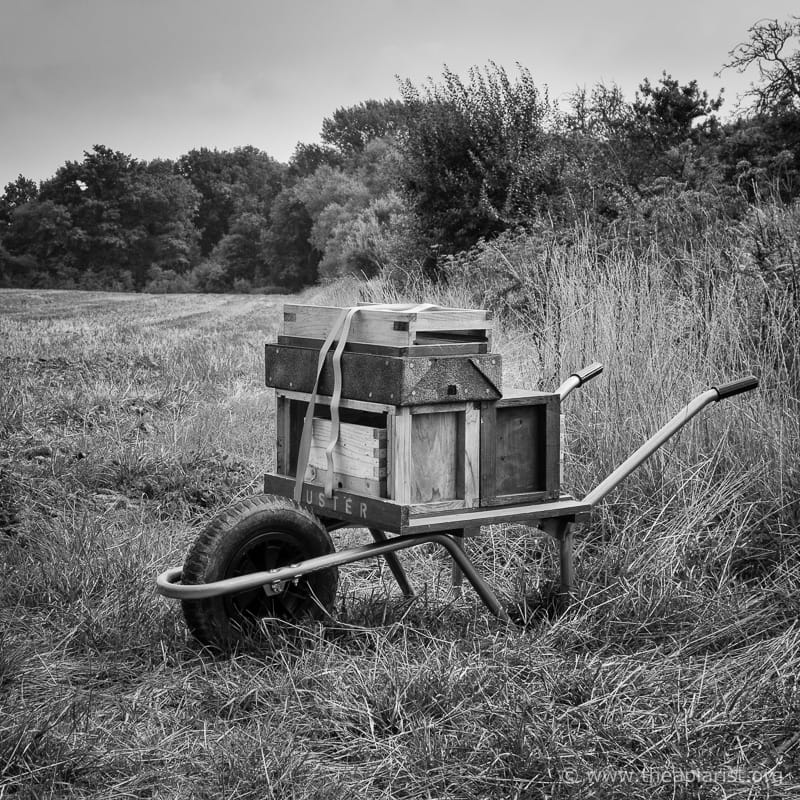

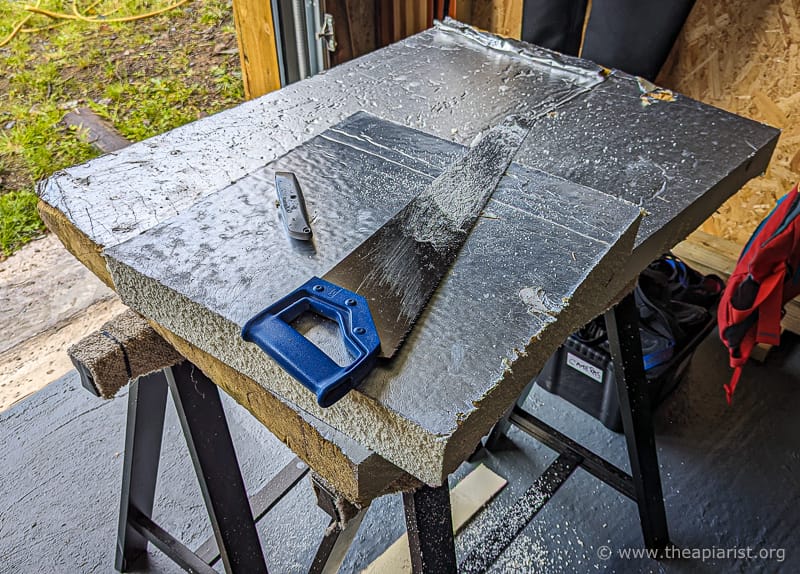
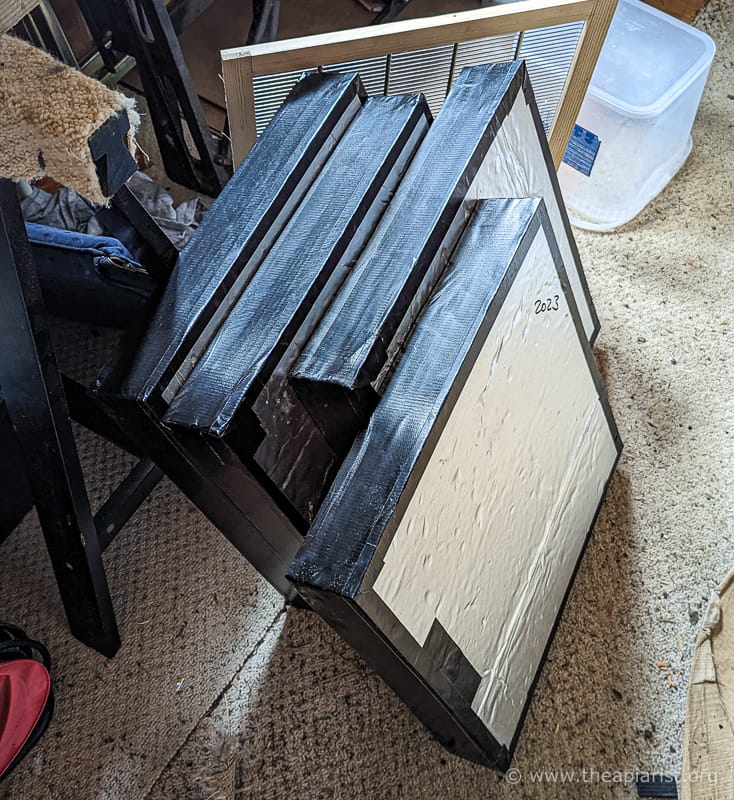
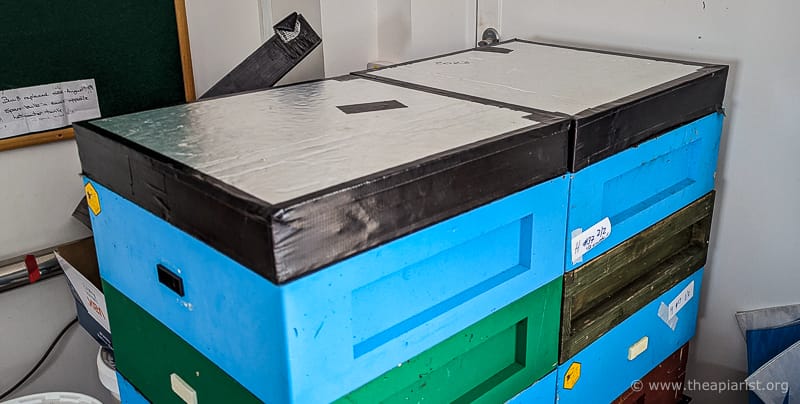
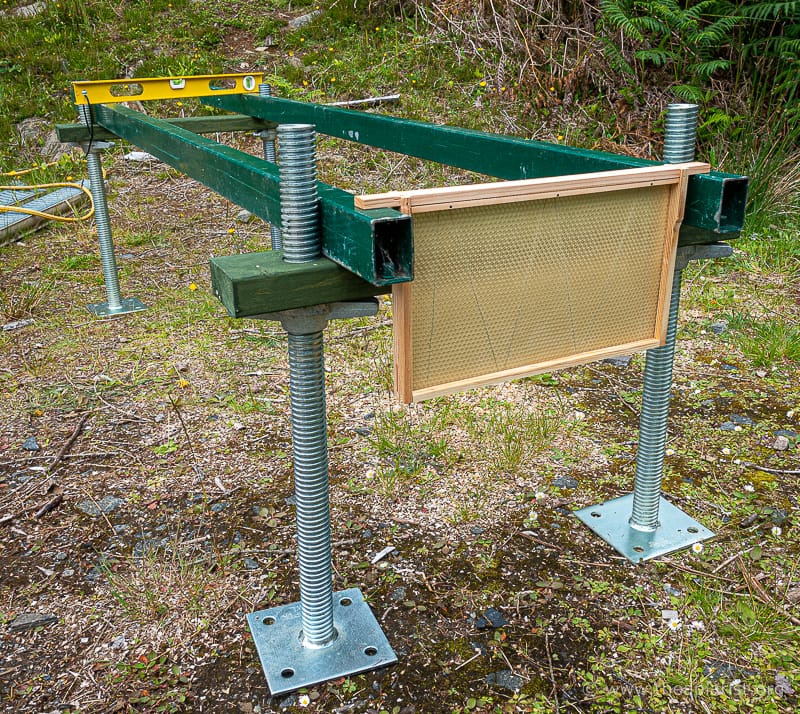
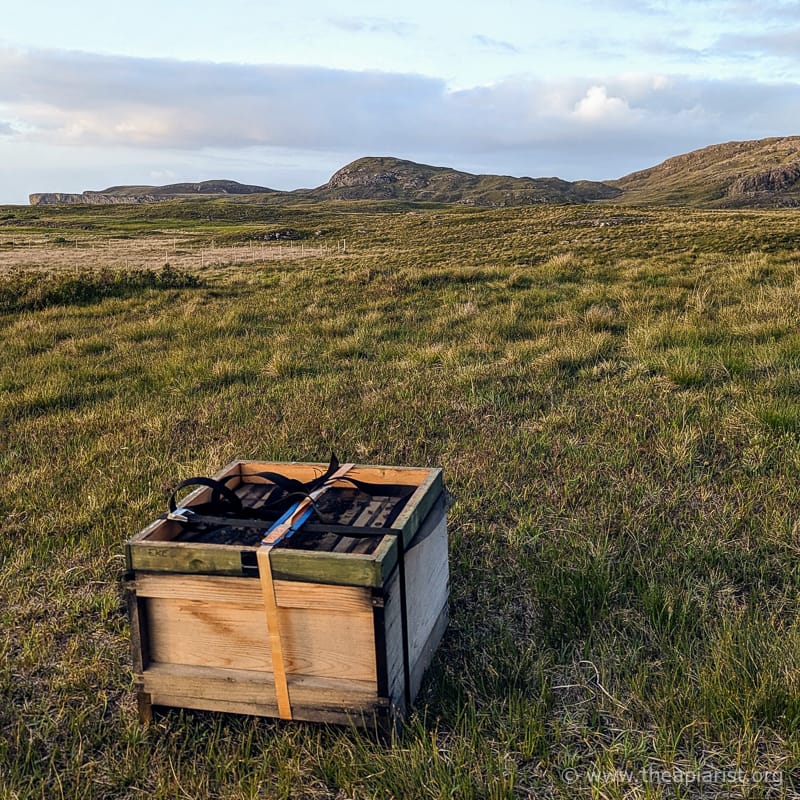
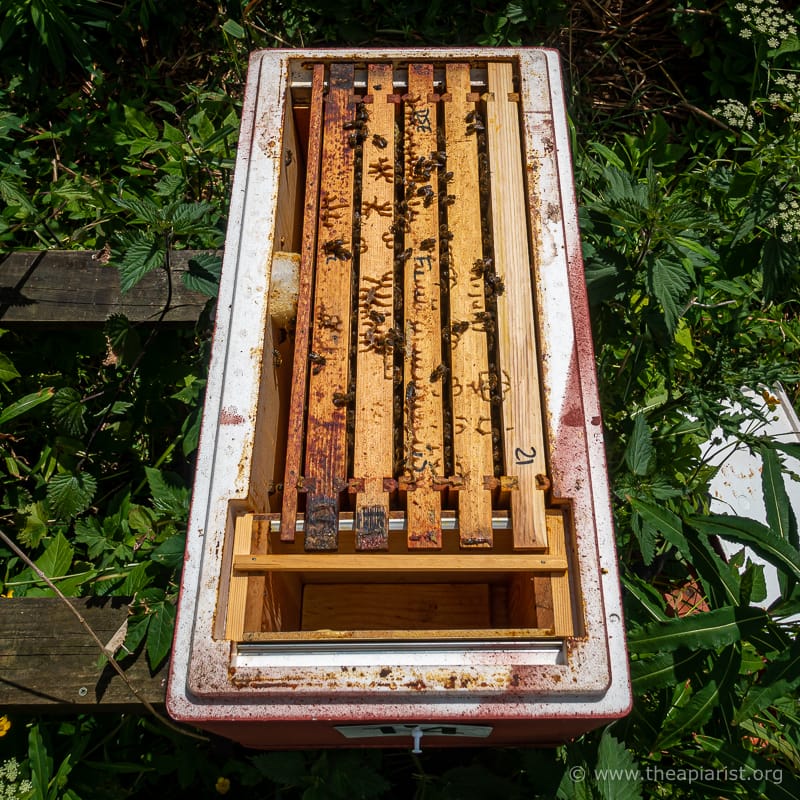
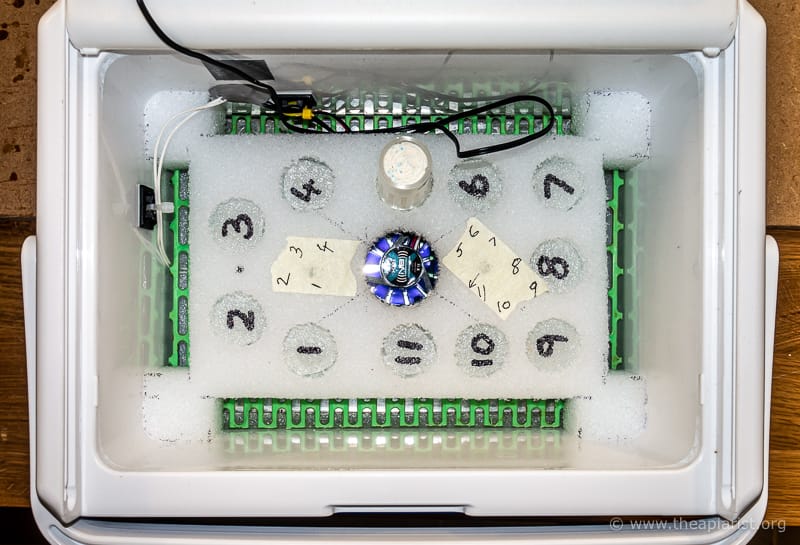
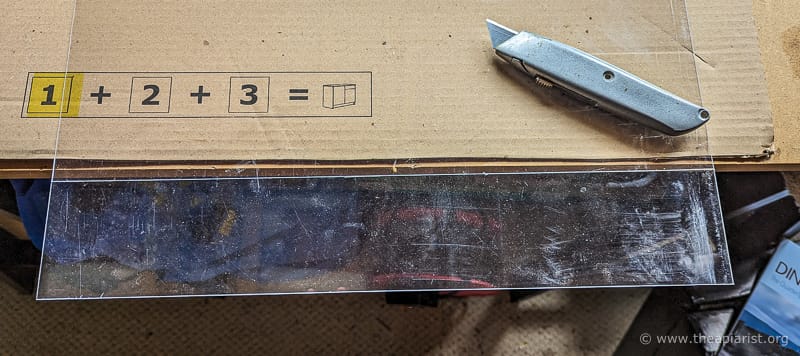
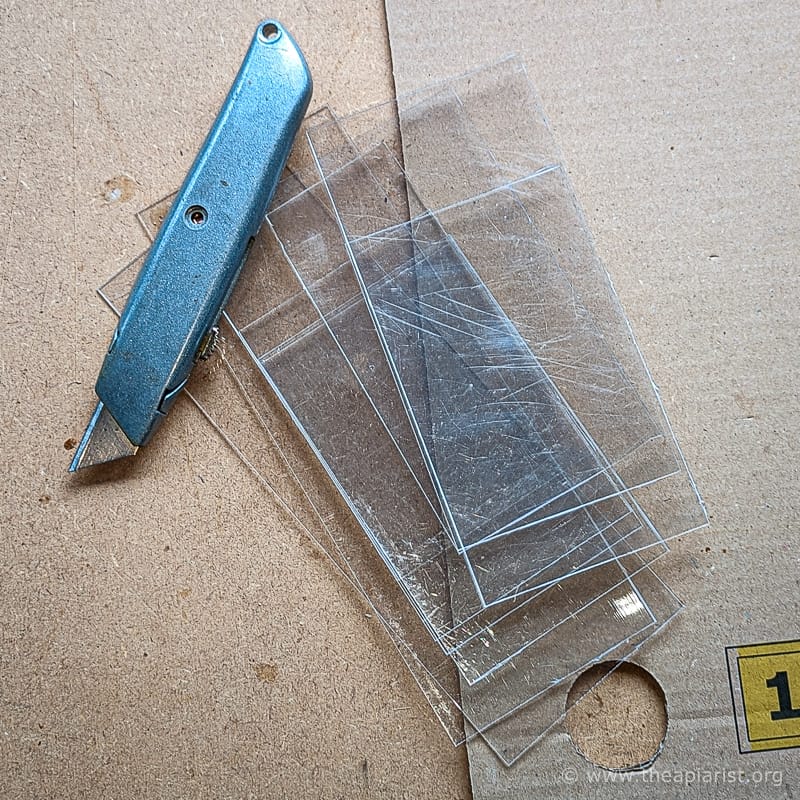
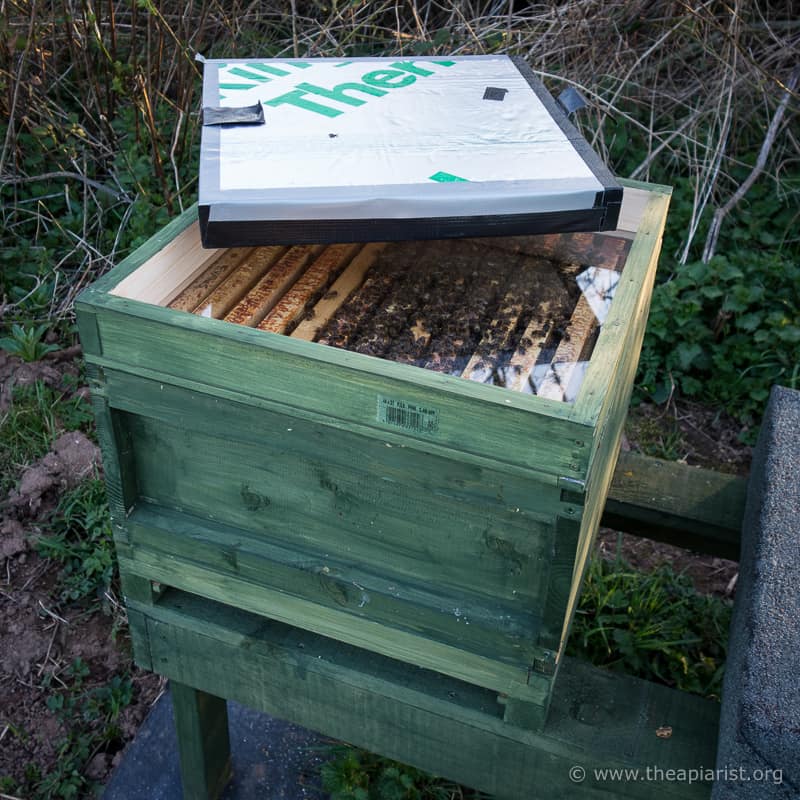
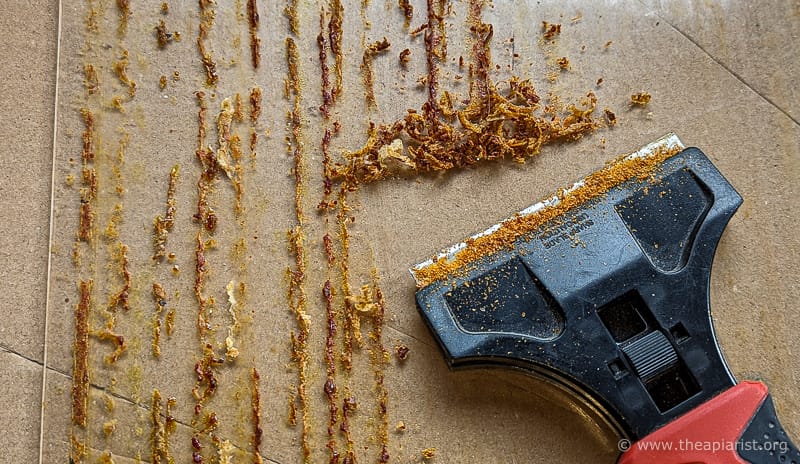
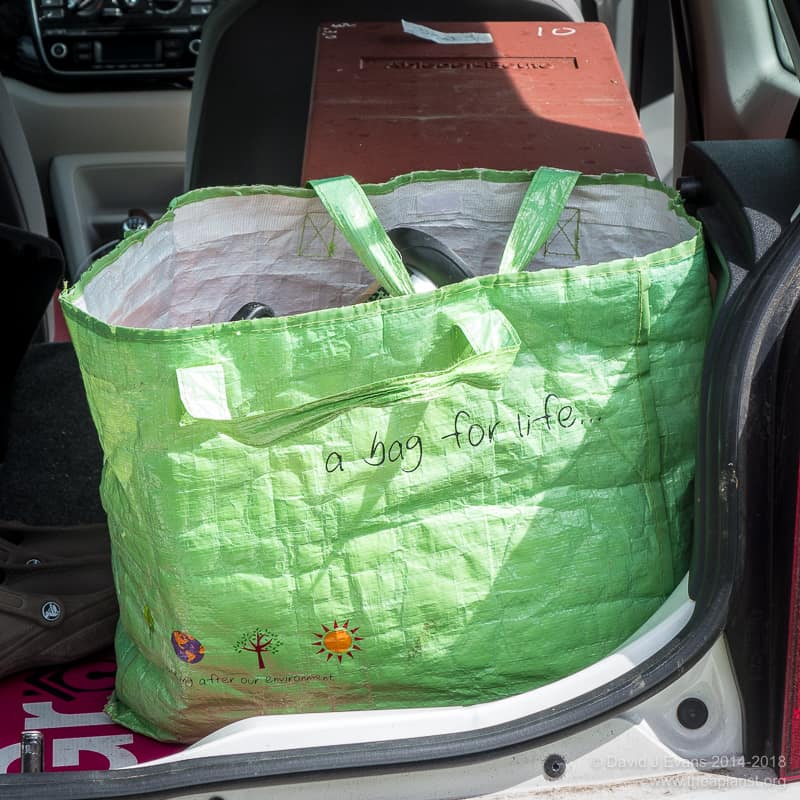
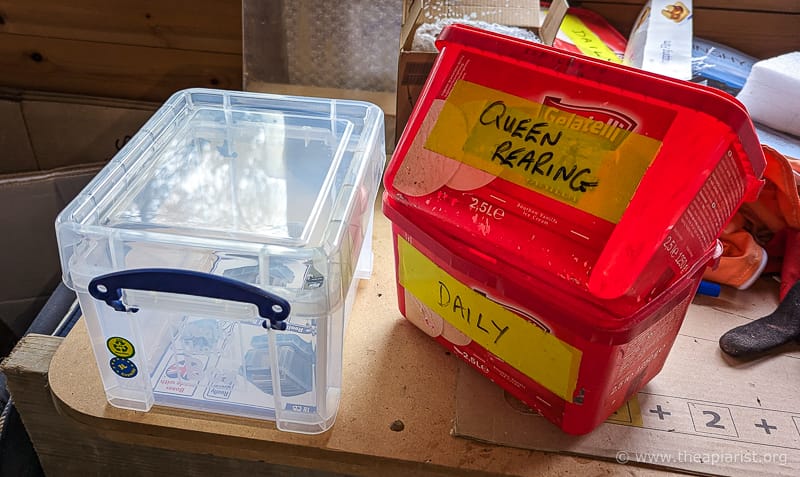
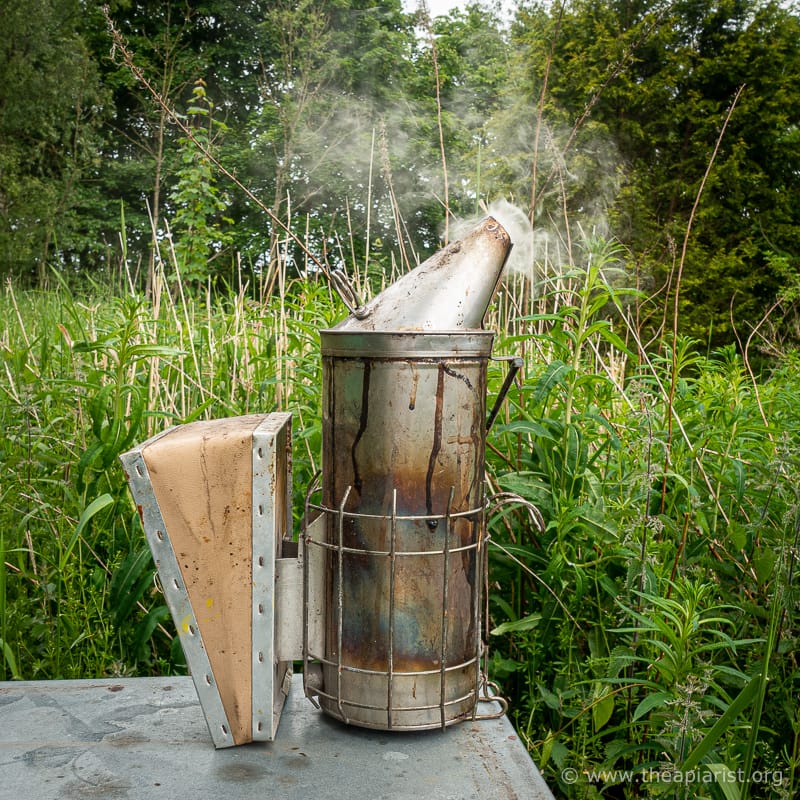

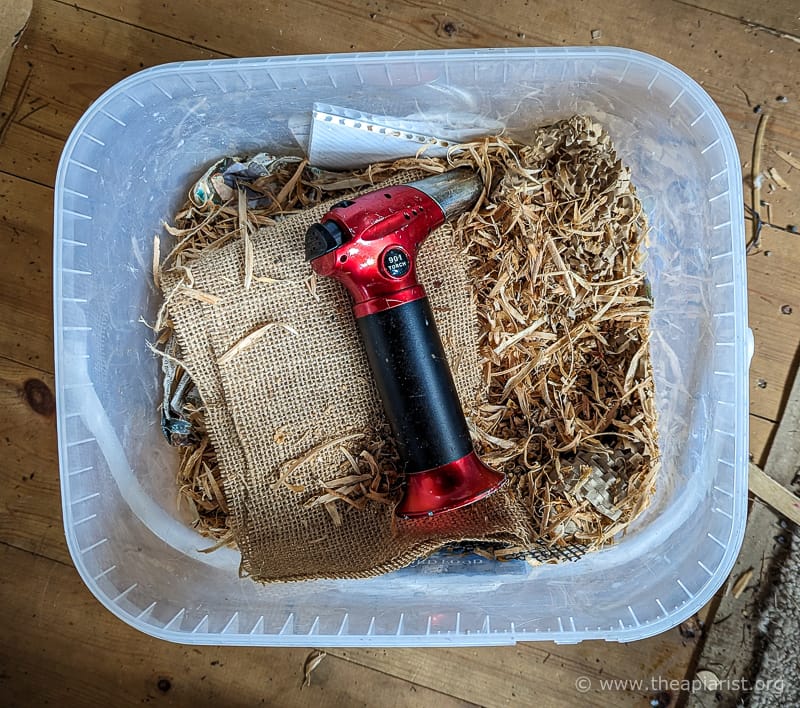

Join the discussion ...